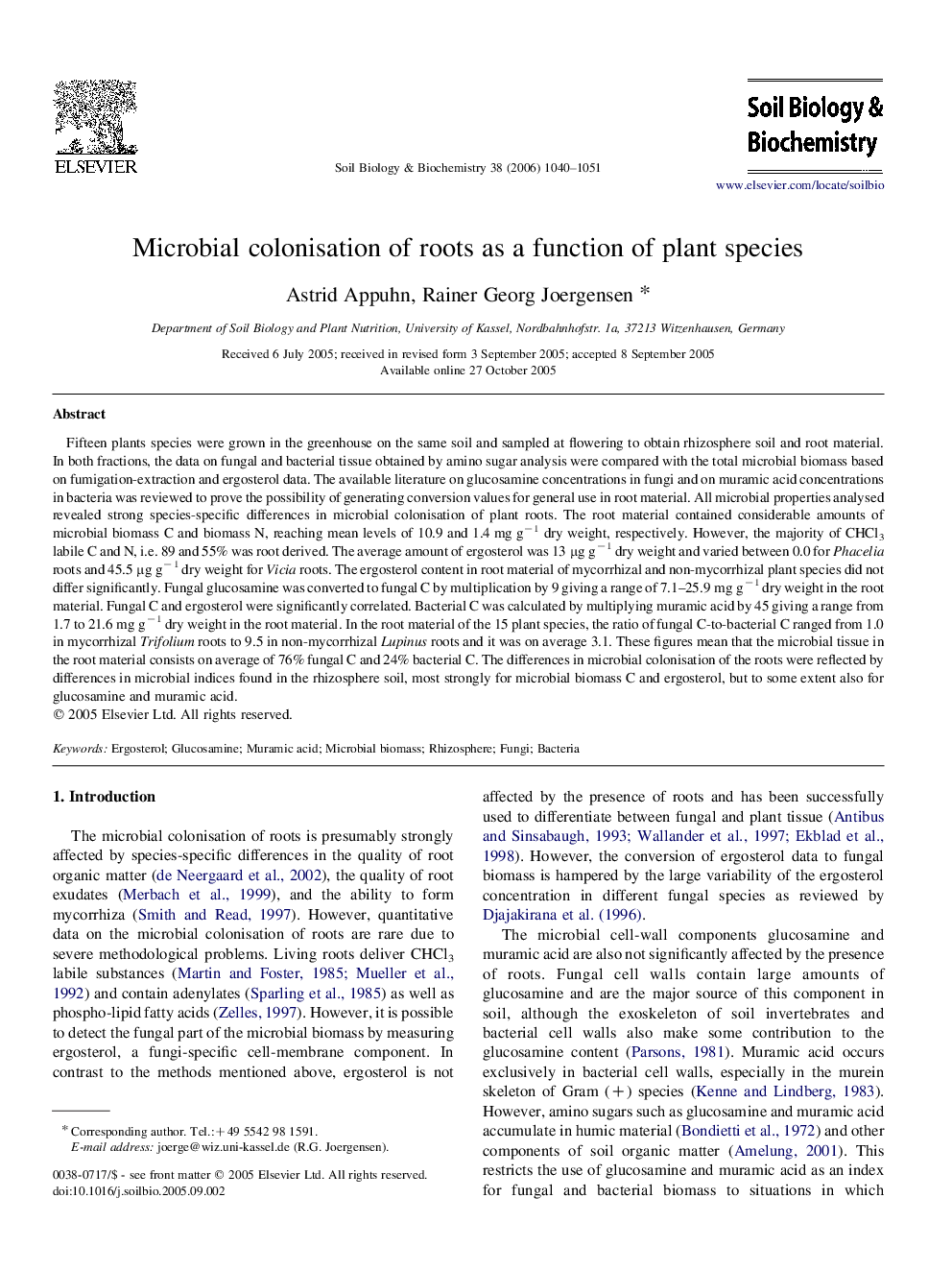| کد مقاله | کد نشریه | سال انتشار | مقاله انگلیسی | نسخه تمام متن |
|---|---|---|---|---|
| 2026335 | 1070026 | 2006 | 12 صفحه PDF | دانلود رایگان |

Fifteen plants species were grown in the greenhouse on the same soil and sampled at flowering to obtain rhizosphere soil and root material. In both fractions, the data on fungal and bacterial tissue obtained by amino sugar analysis were compared with the total microbial biomass based on fumigation-extraction and ergosterol data. The available literature on glucosamine concentrations in fungi and on muramic acid concentrations in bacteria was reviewed to prove the possibility of generating conversion values for general use in root material. All microbial properties analysed revealed strong species-specific differences in microbial colonisation of plant roots. The root material contained considerable amounts of microbial biomass C and biomass N, reaching mean levels of 10.9 and 1.4 mg g−1 dry weight, respectively. However, the majority of CHCl3 labile C and N, i.e. 89 and 55% was root derived. The average amount of ergosterol was 13 μg g−1 dry weight and varied between 0.0 for Phacelia roots and 45.5 μg g−1 dry weight for Vicia roots. The ergosterol content in root material of mycorrhizal and non-mycorrhizal plant species did not differ significantly. Fungal glucosamine was converted to fungal C by multiplication by 9 giving a range of 7.1–25.9 mg g−1 dry weight in the root material. Fungal C and ergosterol were significantly correlated. Bacterial C was calculated by multiplying muramic acid by 45 giving a range from 1.7 to 21.6 mg g−1 dry weight in the root material. In the root material of the 15 plant species, the ratio of fungal C-to-bacterial C ranged from 1.0 in mycorrhizal Trifolium roots to 9.5 in non-mycorrhizal Lupinus roots and it was on average 3.1. These figures mean that the microbial tissue in the root material consists on average of 76% fungal C and 24% bacterial C. The differences in microbial colonisation of the roots were reflected by differences in microbial indices found in the rhizosphere soil, most strongly for microbial biomass C and ergosterol, but to some extent also for glucosamine and muramic acid.
Journal: Soil Biology and Biochemistry - Volume 38, Issue 5, May 2006, Pages 1040–1051